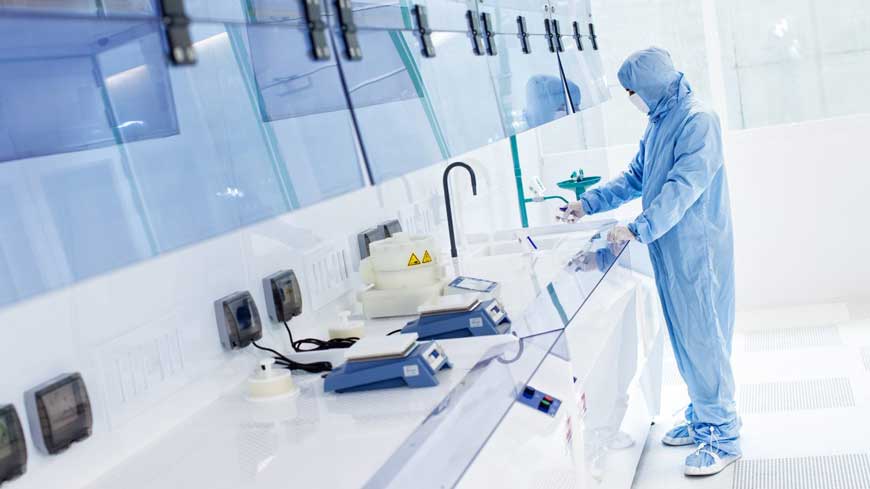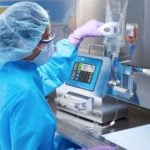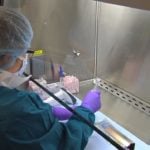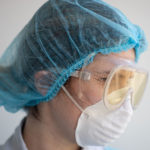What's the Difference Between Sterile and Aseptic?
Is a Cleanroom Sterile?
The differences between sterile and aseptic technique are easily misunderstood, and sometimes used interchangeably. The key distinction between the two is essential for favorable outcomes during pharmaceutical and cleanroom operations. Certain pharmaceutical products must be sterile, including injections, ophthalmic preparations, irrigation solution, and haemodialysis solutions (WHO – 2009)
The answer to this question requires an exacting and quantifiable measurement of microbial contaminants. Our ability to measure contaminants is only as meaningful as our ability to detect them. It’s much harder to maintain a sterile environment than it is to create one. Given the limitations of sampling equipment, pondering whether an environment is 100% eradicated of microbes is rather trivial.
Instead, there are other metrics which help evaluate and measure the overall sterility of an environment such as glove sampling, wipe tests, sterility assurance level, and real-time particle counting with alert levels.
Upstream decontamination strategies, device and tool sterilization, sterile garments, clean-forward furniture, and aseptic technique all reduce the probability of cross contamination and ensure a high probability of sterility at each touch point of the workflow. Only sterile-to-sterile contact is allow.
Related Post: USP 797 Sterile Compounding Cleanrooms
Definition of Sterilization
Sterilization: the use of a physical or chemical procedure to destroy all microorganisms including large numbers of resistant bacterial spores. –CDC
Aseptic Presentation
The objective of aseptic processing is to maintain the sterility of a product during the handling or preparation process. Therefore, aseptic processing doesn’t generate sterile outcomes from non-sterile products, it only maintains sterility of already sterile objects throughout the manufacturing, packaging, or compounding process.
What is the Definition of Sterile?
Sterile conditions require the complete absence of microorganisms including bacteria, fungus, and their spores. For cleanroom applications, that means that a 70% IPA solution doesn’t kill bacterial or fungal spores, and therefore not an effective sterilant.
Sterilization Methods
High-level sterilants such as hydrogen peroxide and peracetic acid based droplet foggers are common for sterilization of large areas.
Mid level disinfectants such as ethanol and isopropyl alcohol are also available in sterile grades. Alcohol are generally used for initial wipedown of isolators and some non-critical devices before application of an EPA registered disinfectant.
Device level sterilization may include ETO, gamma irradiation, and autoclave sterilization to name a few.
What is the Definition of Asepsis?
Asepsis: prevention from contamination with microorganisms. Includes sterile conditions on tissues, on materials, and in rooms, as obtained by excluding, removing, or killing organisms. –CDC
Human operators are by far the greatest perpetrators of introducing microbes to sterile products or surfaces. Proper gowning, training, and cleanroom practices provide a platform for cleanroom asepsis and sterility, but still cannot guarantee the final outcome.
“It is useful to assume that the operator is always contaminated while operating in the aseptic area. If the procedures are viewed from this perspective, those practices which are exposing the product to contamination are more easily identified.”
Hank Avallone – 1988
Sterility Assurance Level
“This figure expresses the probability of a single item in a batch being non-sterile after being subjected to a sterilization process. An effective process has a very low SAL, meaning that there is an extremely small likelihood of any infecting microbes surviving the sterilization.” (Cantel Sterilization Solutions)
Key Definitions and Differences between Sanitization and Disinfection
Antiseptic—An agent that inhibits or destroys microorganisms on living tissue including skin, oral cavities, and open wounds.
Chemical Disinfectant—A chemical agent used on inanimate surfaces and objects to destroy infectious fungi, viruses, and bacteria, but not necessarily their spores.
Cleaning Agent—An agent for the removal from facility and equipment surfaces of product residues that may inactivate sanitizing agents or harbor microorganisms.
Disinfectant—A chemical or physical agent that destroys or removes vegetative forms of harmful microorganisms when applied to a surface.
Germicide: an agent that destroys microorganisms, especially pathogenic organisms. Other terms with the suffix “–cide” (e.g., virucide, fungicide, bactericide, tuberculocide, sporicide) indicate an agent that destroys the microorganism identified by the prefix. Germicides may be used to inactivate microorganisms in or on living tissue (antiseptic) or on environmental surfaces (disinfectants).
Low-level disinfection: a process that will inactivate most vegetative bacteria, some fungi, and some viruses but cannot be relied on to inactivate resistant microorganisms (e.g., mycobacteria or bacterial spores).
Low-level disinfectant: a liquid chemical germicide registered by the EPA as a hospital disinfectant. OSHA requires low-level disinfectants also to have a label claim for potency against HIV and HBV if used for disinfecting clinical contact surfaces.
Sanitizing Agent—An agent for reducing, on inanimate surfaces, the number of all forms of microbial life including fungi, viruses, and bacteria.
Sporicidal Agent—An agent that destroys bacterial and fungal spores when used in sufficient concentration for a specified contact time. It
is expected to kill all vegetative microorganisms.
Sterilant—An agent that destroys all forms of microbial life including fungi, viruses, and all forms of bacteria and their spores. Sterilants are liquid or vapor-phase agents.
Related Post: Sterile 3D Printing for Medical Devices
Post updated: 10/01/2020
Related Posts
-
Air Showers: Increasing Productivity & Reducing Costs of Cleanroom Operations
Article reprinted from Clean Air Products, manufacturers of air showers, cleanrooms, and cleanroom accessories. A cleanroom provides a controlled environment in which companies can produce contaminate-free products. Air showers are a vital component of maintaining…
-
Updated: USP Sterile Compounding 2019
First published in 2004, USP Chapter has undergone proposed revisions as of July 2018. These revisions are now available for public comment.
-
USP 797 Guidelines: Sterile Compounding Cleanroom Design, Components, and Procedure
USP Chapter 797 cleanroom design requires that facilities pressurize non-hazardous compounding and storage areas. ISO 5, 7 and 8 environments support primary engineering controls, buffer rooms, and ante-rooms. Updated: 4/18/2019
-
Cleanroom and Sterile Compounding Glossary and Definitions
The definitive cleanroom and sterile compounding glossary. Learn terminology and definitions for USP 797 and USP 800 compounding.
-
70% Alcohol Battles Against Super Bacteria?
New reports indicate that alcohol hand washes and sanitizers may be losing the hygiene battle against super strains of Enterococcal bacterial.
-
Advantages of Peracetic Acid Sporicides
What are the advantages of peracetic acid sterilants for cleanroom disinfection? Where is it used? How does it compare to gas sterilization methods?










